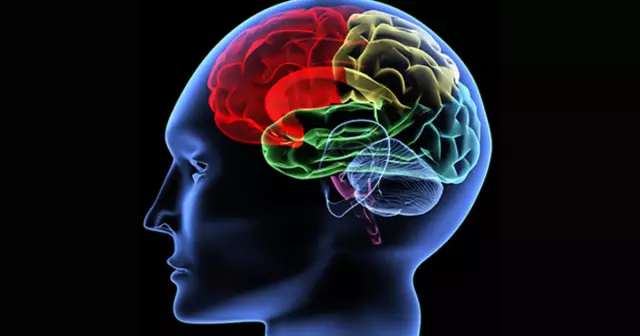- Author Rachel Wainwright [email protected].
- Public 2023-12-15 07:39.
- Last modified 2025-11-02 20:14.
6 most common myths about the human brain
The human brain has been studied for more than one hundred years, but the number of mysteries associated with it is increasing rather than decreasing. Perhaps this explains the misconceptions about the structure and functioning of the brain, many of which arose a very long time ago, but have survived to this day. We are ready to acquaint our readers with the most common myths of this kind.

Source: depositphotos.com
The brain tissue is gray
Where this statement came from is unknown, but most people are confident in its validity. In fact, living brain tissue is red, and a gray color is characteristic of dead medulla removed from the cranium.
Dead brain cells are not restored
Cells of any tissue in the human body live for a certain period of time and then die off, and brain cells are no exception. This process is accelerated under the influence of stress, the use of harmful substances (alcohol, nicotine, etc.), diseases and other negative factors. However, the brain has a remarkable ability to regenerate: its cells are restored even in cases where very large areas of the cortex are destroyed. This explains the return of vital functions in patients who have suffered a stroke or become victims of serious craniocerebral trauma.
The intensity of the brain weakens with age
This phenomenon is really observed: in older people, memory weakens, intelligence and ability to perceive new information decreases. However, the intensity of this process depends not so much on the number of years lived as on the way of life. The preservation of brain activity is facilitated by the absence of bad habits and constant (until very old age) intensive activity, preferably reasonable and bringing satisfaction to a person.
A large number of centenarians are known to have met their centenary in a state of such intellectual activity that many young people can envy.
Intelligence directly depends on the size of the brain
The belief that big-headed or high-browed people are smarter than others has been around since ancient times, but has nothing to do with reality. Intellectual capabilities do not depend in any way on the weight of the brain or on the volume of the skull. This is confirmed by numerous studies, the authors of which have compared these parameters of the brain of famous scientists, writers, artists and politicians.
Damage to brain tissue results in cavities
It is believed that any mechanical damage to the head associated with the penetration of a solid object into the skull leads to the formation of a cavity in the brain. This is not true. The consistency of the medulla is similar to jelly, quickly filling voids. Of course, in such cases, we are not talking about the instant restoration of lost functions: this is a complex process, the speed and result of which depend on the nature of the injury, the size and location of the affected area of the cortex, as well as the assistance that is provided to the patient.
“No more than 10% of brain cells are actively working”
The source of the myth, apparently, is the not entirely considered or misunderstood conclusions of several scientists made in the late 19th - early 20th centuries. Perhaps this statement would not have gained wide popularity if not for science fiction writers. The idea that nine-tenths of the human brain contains some unknown, but very promising possibilities, while in a dormant state, turned out to be so attractive that it became the basis of many literary plots and gradually began to be perceived as a scientific axiom.

Source: depositphotos.com
In the last 100-150 years, a large number of studies have been carried out that refuted this opinion. For example, it has been established that the brain is divided into zones, each of which controls certain vital functions (that is, all zones are equally active at every moment of time). In addition, using the example of the brain of patients suffering from "neural" diseases, it was found that those cells of the cortex that are excluded from the general work process due to an illness degenerate. If the statement about 10% reflected the real state of affairs, a picture of large-scale dying off of cortical cells would be observed during an autopsy of the brain of any adult. Do not forget about the evolutionary side of the issue: nature usually gets rid of organs that are little exploited, and gives an advantage to those individuals in which such organs atrophy. In the case of the brain, this meansthat in each subsequent generation the percentage of people with a small volume of the cortex should increase, but this phenomenon is not observed.
Many aspects of the functioning of the human brain are still unexplored. It is possible that in the near future, scientists will find answers to some questions, and this will provide an opportunity to open a new page in the treatment of various serious ailments.
YouTube video related to the article:

Maria Kulkes Medical journalist About the author
Education: First Moscow State Medical University named after I. M. Sechenov, specialty "General Medicine".
Found a mistake in the text? Select it and press Ctrl + Enter.






